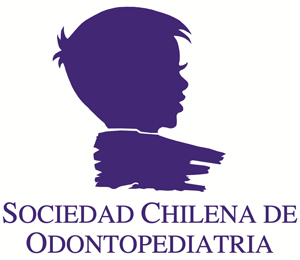Órgano oficial de difusión
científica de
Sociedad de Periodoncia
de Chile
Sociedad de Implantología Oral
de Chile
![]()
Sociedad de Prótesis y
Rehabilitación Oral de Chile

Sociedad Chilena de
Odontopediatría

Sociedad de Ortodoncia
de Chile

Federación Ibero Panamericana
de Periodoncia
![]()
Asociación Iberolatinoamericana
de Rehabilitación Oral (AILARO)
Indexada en:
Scielo, ScienceDirect,
Latindex, Redalyc
Rev Clin Periodoncia Implantol Rehabil Oral. 2008;1:57-60
TRABAJOS DE INVESTIGACIÓN [PDF![]() ]
]
Recuento de Células Infiltrantes CD4+, CD8+ y CD19+ en el Tejido Gingival de Individuos con Periodontitis Crónica
Recount of CD4+, CD8+ and CD19+ Infiltrate Cells in Gingival Tissues of Subjects with Chronic Periodontitis
Cisterna C1, Rivera O1, Dutzan N1.
1Laboratorio de Biología Periodontal, Facultad de Odontología, Universidad de Chile. Chile.
Resumen
La periodontitis es una enfermedad inflamatoria del tejido periodontal, iniciada por el biofilm subgingival, que genera la destrucción progresiva de las estructuras de inserción dentaria. La naturaleza de la respuesta inflamatoria, determinaría el carácter destructivo de la enfermedad, considerándose un importante modelo para investigar el potencial patológico del infiltrado celular. En la periodontitis, este infiltrado incluye linfocitos T y B. Los linfocitos T CD4+ y T CD8+, efectores de la inmunidad celular, son claves en la inmunorregulación, pues pueden generar una respuesta celular o humoral. La relación T CD4+/CD8+ es considerada un indicador de la función del sistema inmune. Para determinar los porcentajes de células CD4+, CD8+ y CD19+ en el tejido gingival de individuos con periodontitis crónica y periodonto sano, y el valor de la razón entre las células CD4+/CD8+, tomamos biopsias de tejido gingival a 17 sujetos con periodontitis crónica y 11 periodontalmente sanos. Las muestras fueron digeridas en colagenasa, inmunotipificadas y analizadas mediante citometría de flujo, obteniendo que los porcentajes de todas las poblaciones estudiadas, así como, el valor de la razón CD4+/CD8+ aumentaron en las muestras de tejido enfermo respecto al tejido sano. Todas estas diferencias fueron estadísticamente significativas. Concluimos que las células CD4+, CD8+ y CD19+, son las más abundantes dentro del infiltrado celular de la periodontitis crónica, y suponemos que las células CD4+ serían claves en la regulación de la respuesta inmune de la enfermedad, dado que su población registró el mayor aumento en el tejido enfermo.
Palabras claves: Periodontitis crónica, linfocitos, infiltrado celular.
Abstract
The periodontitis is an inflammatory disease of the periodontal tissues, initiated by subgingival biofilm, that result in the progressive destruction of the structures that support the teeth. The nature of inflammatory response, could determine the destructive character of disease, and provides an important model for investigation of the pathological potential of cellular infiltrates. In the periodontitis, the infiltrates includes lymphocytes T and B. The lymphocytes T CD4+ and T CD8+, effectors of cellular immunity, are key cells in immunoregulation because they can lead to cellular or humoral response. The ratio of CD4+/CD8+ is considered to be an important indicator for immune system functions. For determinate the percentages of CD4+, CD8+ and CD19+ cells in the gingival tissues of periodontal and healthy subjects, and evaluate the CD4+/CD8+ cells ratio, were obtained biopsies of gingival tissues from 17 chronic periodontitis patients and 11 periodontally healthy subjects. The samples were incubated in collagenase, inmunolabeling and analyzed using flow cytometry. The obtained percentages in every studied cell population, as well, the ratio CD4+/CD8+ were increased in the periodontitis biopsies respect to healthy tissues. Every difference was statistically significant. We conclude that CD4+, CD8+ and CD19+, are the most abundant cells in the chronic periodontitis cellular infiltrate, and we suspect that CD4+ cells could be key on the immune response regulation to the disease, since this population recorded the higher increase in sick tissues.
Key words: Chronic periodontitis, lymphocytes, cellular infiltrates
El Texto completo solo está disponible en PDF 
Bibliografía
Trabajo recibido el 27/02/2008.
Aprobado para su publicación el 01/07/2008.
CORRESPONDENCIA AUTOR
Nicolás Dutzan Muñoz
Olivos 943. Independencia. Santiago. Chile.
ndutzan@gmail.com
Copyright © 2008.
Sociedad de Periodoncia de Chile, Sociedad de Implantología Oral de Chile y Sociedad de Prótesis y Rehabilitación Oral de Chile.